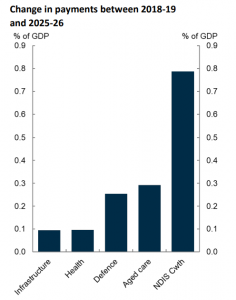Aged care providers should take note of the words of two senior figures on Australia’s economic future made in the last week.
The first is Treasury Secretary Dr Steven Kennedy, who gave a post-Budget briefing to the Australian Business Economists last week. You can read his speech here.
The second is Reserve Bank Governor Philip Lowe (pictured above), who appeared on the ABC’s 7.30 on Tuesday night to address the Reserve Bank’s latest rate rises and their impact. You can watch Mr Lowe’s interview here.
Both had similar messages, warning that higher inflation is likely to continue into at least 2023.
Mr Lowe said he expects inflation to rise to 7% by the end of the year, with the RBA to keep pressure on interest rates until inflation is reduced down to 2-3%.
The key takeaways from both men?
The Federal Budget will remain in deficit for years to come – and the new Government must begin to rein costs back in.
“Australia needs to rebuild fiscal buffers to ensure the Government can respond effectively to future crises. This will help to keep debt on a sustainable path over the longer term,” said Dr Kennedy.
 But both also stressed that the demands on the public purse will keep rising post-COVID, mainly due to the National Disability and Insurance Scheme (NDIS), aged care, defence, health and infrastructure.
But both also stressed that the demands on the public purse will keep rising post-COVID, mainly due to the National Disability and Insurance Scheme (NDIS), aged care, defence, health and infrastructure.
“Understandably, the society wants the government to finance spending on a whole range of social services,” said Mr Lowe. “It’s harder to find out how we’re going to pay for that.”
These can be funded in one of two ways: looking for savings in the budget or increasing taxes.
Given the new Labor Government made significant spending promises during the election campaign – and has also pledged not to increase taxes – this places Prime Minister Anthony Albanese and his Ministers in a tough position.
Is there a solution to fund Australia’s future aged care system?
As we have discussed, there needs to be a Plan B: increasing the rate of co-contributions from older Australians who can afford to help foot the bill for their aged care costs – while continuing to support those who cannot.
This will require a tough conversation with the community – but it will be necessary if we are to achieve the original vision set out by the Aged Care Royal Commission.
As Dr Kennedy concluded: “Providing higher quality aged care and disability services is improving the lives of many Australians, and it is within our control to maintain this improvement while reducing pressures arising from poorly designed policies.
“We will need a tax system fit for purpose to pay for these services, that appropriately balances fairness and efficiency. This is achievable.”










